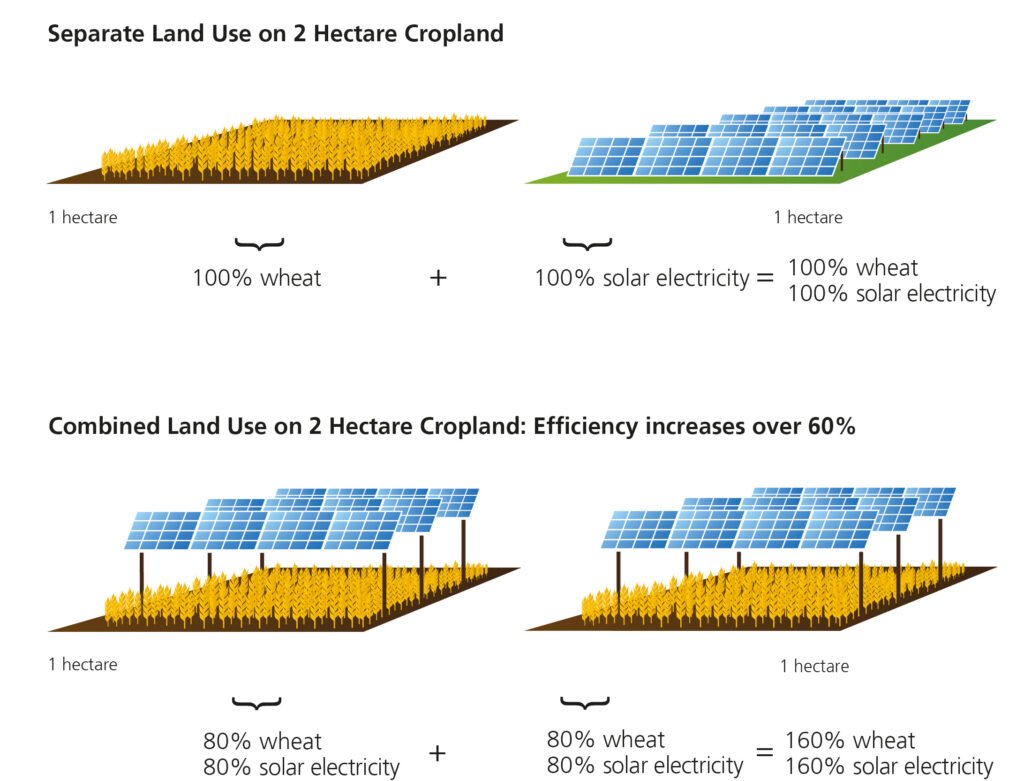“Agri” is a term that refers to food production. The term “voltaic” refers to the process of generating energy. Agrivoltaic agriculture is unmistakably different from conventional farming – solar panels are strategically placed to provide plants with the optimal amount of sunlight, and the extra sunlight is gathered for energy.

The strategy generates more sunshine than would be possible without the crops underneath the arrays, since the plants help keep the solar panels cool, which increases their efficiency.
Population expansion and rising need for clean energy, food, and water are putting increasing strain on agricultural land, demanding the quick development of creative, comprehensive, and climate-friendly solutions.

Scientists are already establishing demonstration gardens to demonstrate the viability of an agrivoltaic approach to agriculture. According to a recent Oregon State University (OSU) research, converting only 1% of American farmland to agrivoltaics might help the United States reach its national renewable energy objectives, save water, and develop a long-term sustainable food system.
Agrivoltaic systems installed on a large scale may result in a decrease in carbon dioxide (CO2) emissions equal to eliminating 71,000 automobiles from the road each year and the development of over 100,000 employment in rural areas.

Agrivoltaics offers a unique opportunity for real synergy: increased food production, increased energy production, decreased water demand, decreased carbon emissions, and more wealthy rural communities.
Agrivoltaic systems, which intentionally optimize the usefulness of a same parcel of land for both solar PV power generation and agricultural, have been proved to be a feasible technology capable of resolving conflicting land uses and effectively meeting expanding energy and food needs.
Reference- Science Direct, MDPI website, Oregon State University (OSU) study






